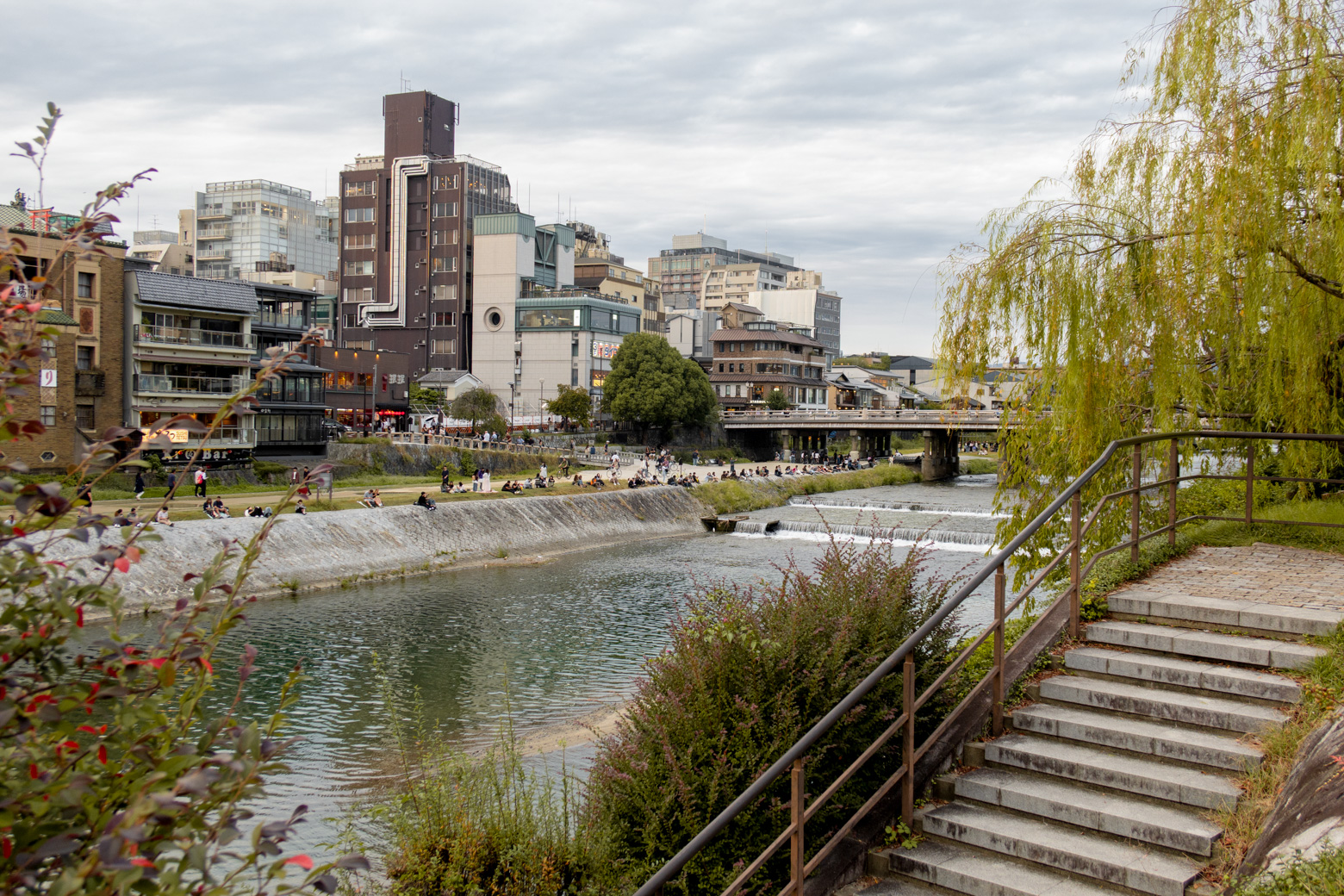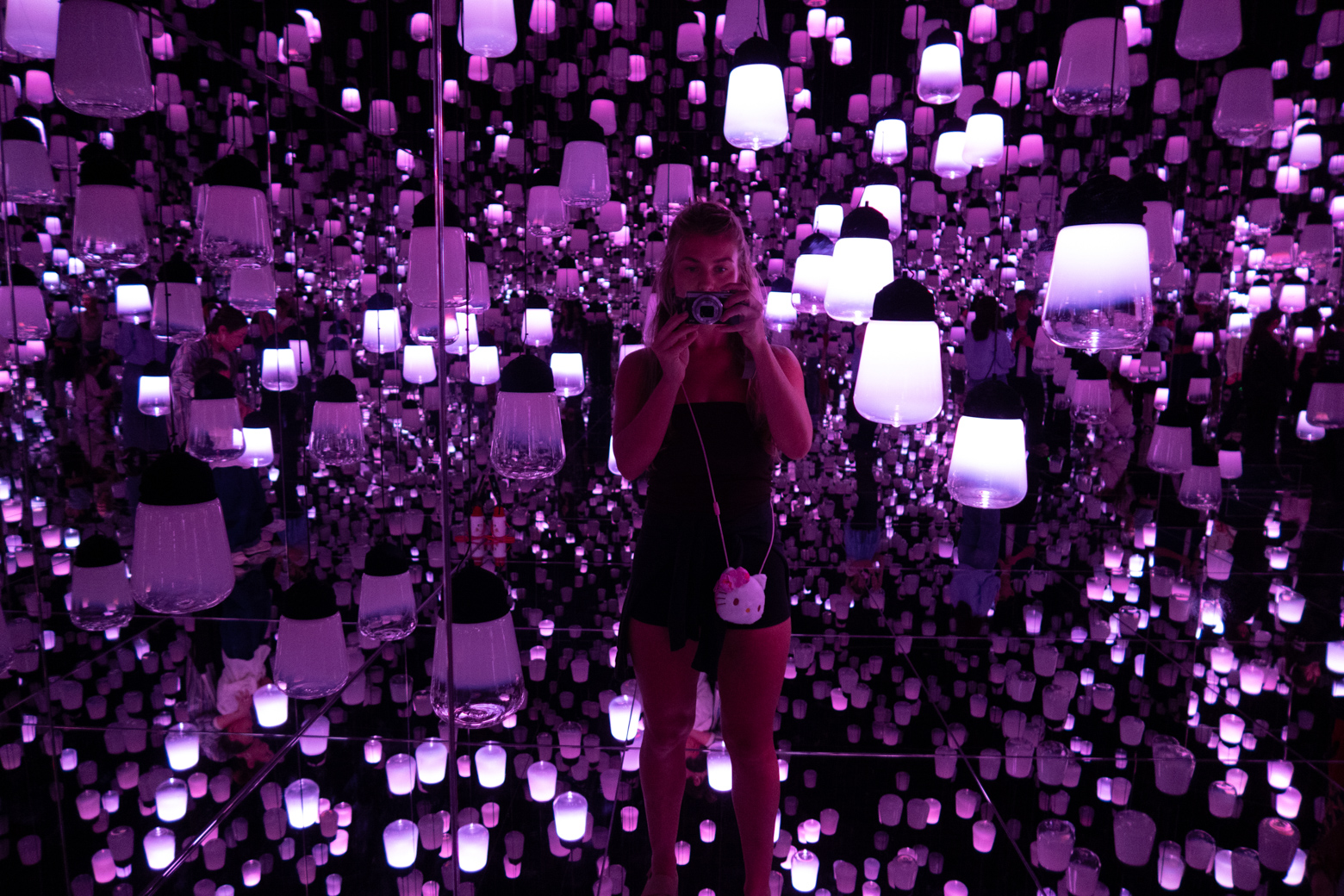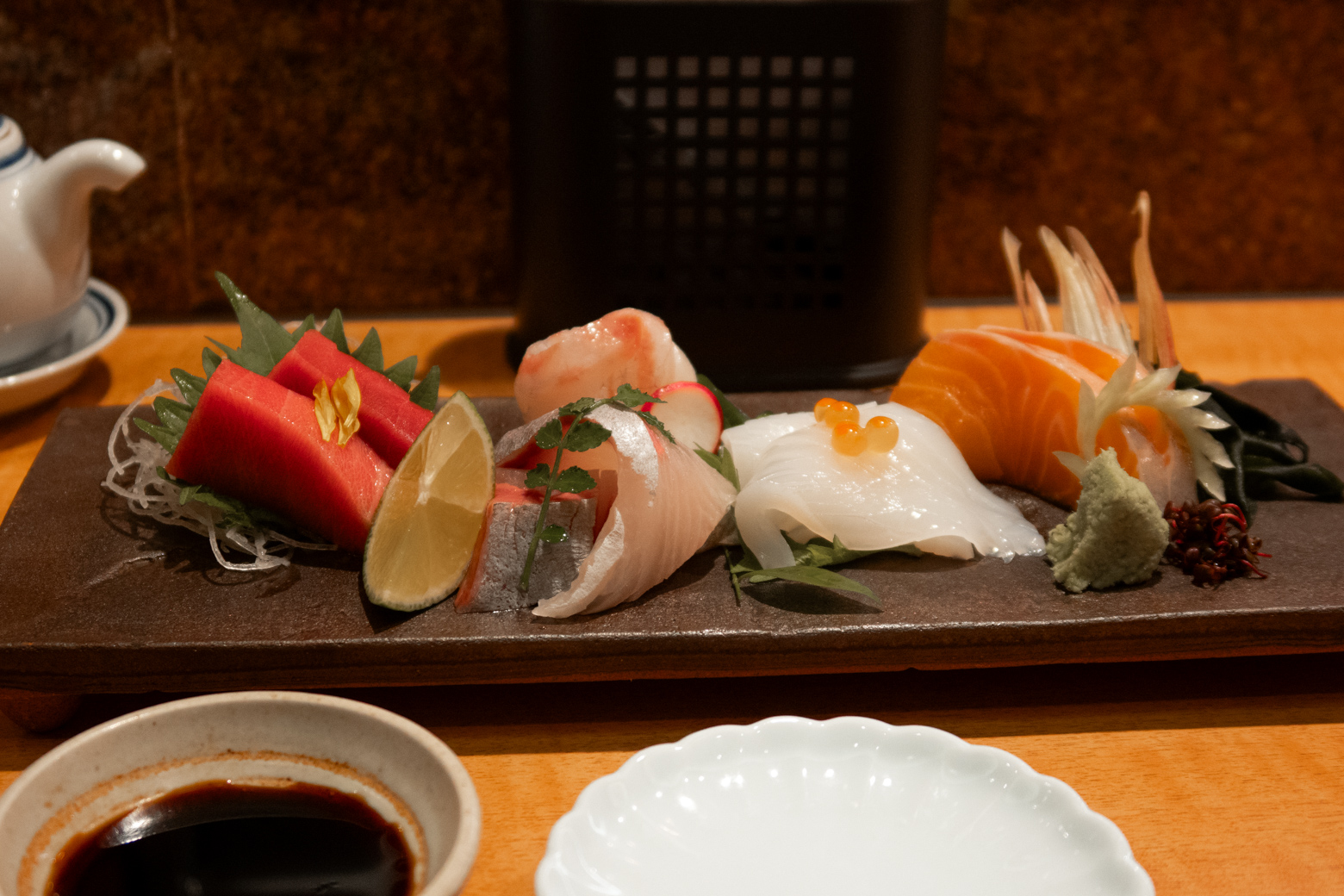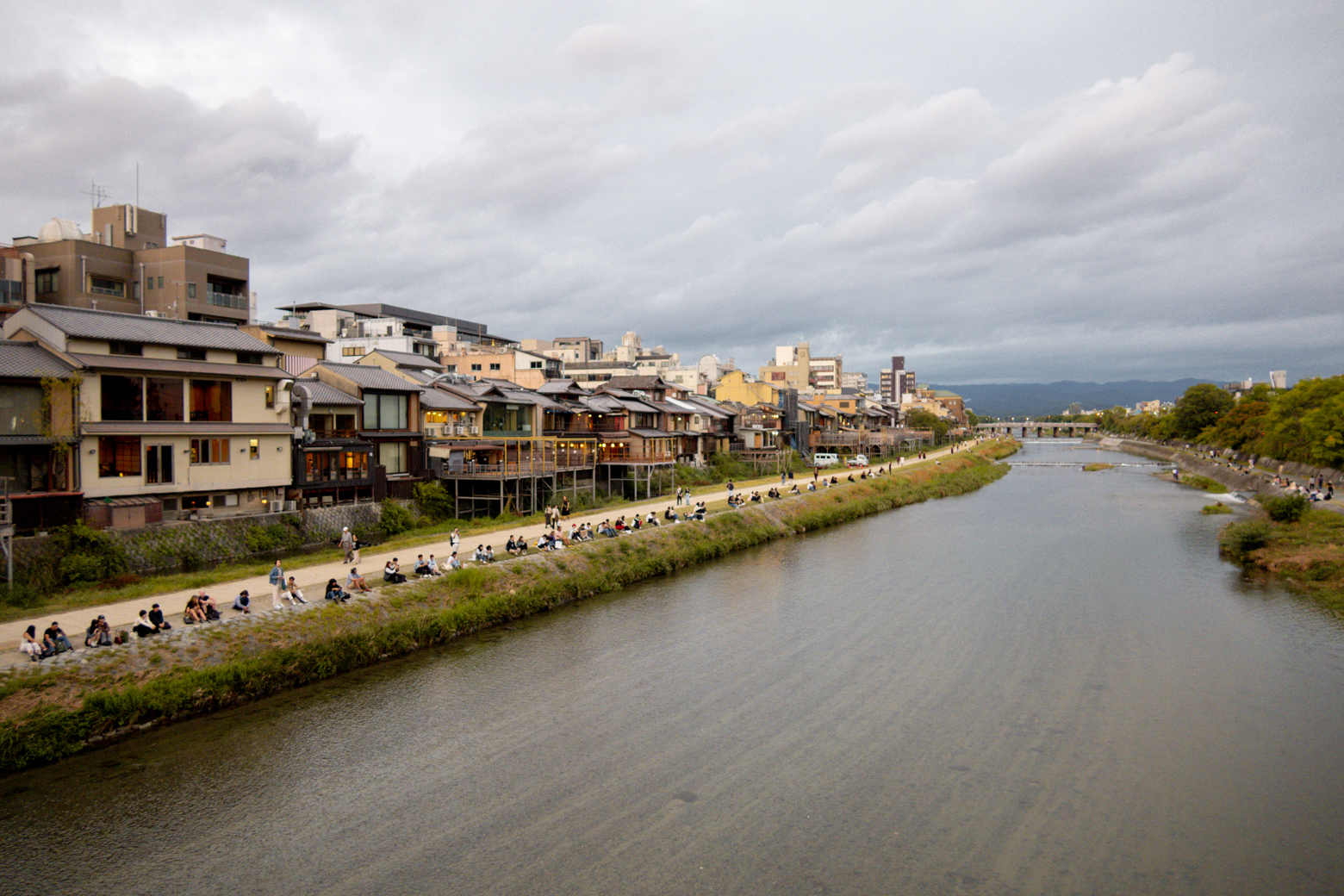Are you heading to Kyoto and looking for the best Kyoto attractions and things to do during your time there? Look no further, you’ve landed in the perfect post.
Kyoto, Japan is the kind of city that lends to a slower pace of travel, I think thats why I loved my time here so much. Exploring Kyoto is all about wandering bamboo forests, admiring hillside temples, contemplating peaceful zen gardens, and afternoons wandering streets lined with wooden teahouses and kimono-clad locals. It’s also a dream for anyone who loves exploring on foot, trying authentic Japanese cuisine, and diving deep into cultural heritage.
Whether you’re here in Kyoto for its centuries-old shrines, ancient tea ceremony immersions or its Michelin-starred matcha desserts, Kyoto will captivate you in more ways than one.
In this Kyoto, Japan travel guide, I’m going to share a 3-day itinerary that, in my opinion, shows off the best of Kyoto. This Kyoto itinerary offers a perfect balance of outdoor adventure, tradition, food and culture – a little bit of everything!
We’ll have you ticking off iconic temples and shrines (like Kyoto’s Fushimi Inari), walking traditional streets, and devouring the local eats at spots like the Nishiki Market. Leave it with me. Pens and notepads at the ready, let’s make your Kyoto adventure one to remember.

Let’s begin with answering the question, ‘Where is Kyoto?’, shall we?
Kyoto is located in the Kansai region of Japan, just an hour by train from Osaka and a little over two hours from Tokyo, making it an easy stop on any Japan itinerary. It’s close proximity to both airports means you can land into either of these interational hubs and get to Kyoto, Japan with ease.
Fun fact: Kyoto, Japan, was once the capital (for over 1,000 years), and whilst Tokyo is now the captial, Kyoto remains Japan’s spiritual heart.

Best time to visit Kyoto
Kyoto is beautiful year-round, but from what I read and discovered, the best times to visit are spring (March–May) and autumn (October–November).
Spring is when the Sakura trees blossom (cherry blossom season), while autumn paints the temples in deep reds and golds (mid-November foliage). Summer can be very hot and humid (apparently more so in recent years), but it’s also festival season, which is super fun. Winter offers crisp air and fewer crowds — perfect for temple hopping and hot tea.
I visited at the end of October and the weather was surprisingly warm, sitting around 19-26degrees each day! It was stunning for temple hikes and exploring the city. Apparently, it’s usually cooler than this, but in recent years it’s staying warm a little longer. In my final few days in early November, the temperature did start to drop and the leaves started to turn red – I just missed the gorgeous turning of leaves!

Get lifetime access to my endless hours of research and time spent on the ground finding the best places to eat, drink, relax and explore in Japan. Simply open the Google Map on your device and all my recommendations are at the touch of your fingertips.
Day 1 in Kyoto
Your first day in Kyoto is all about immersing yourself in local temples, wandering traditional streets and getting started with tasting some local delicacies.
You’re going to start by getting your morning caffeine or matcha fix at Black Cat Coffee, which is a little hole in the wall vibe (see picture below left). Amazing coffee served by a local Japanese guy. It’s a one man show and it’s going to fuel you up for a day on your feet.
Note: Get your comfy walking shoes on!
P.s. I have actually pinned all the spots I found on my trip to Kyoto onto the Japan Google map legend, so if you want to unlock access to ALL my tips, click here.
Once you’ve had your caffeine, it’s time to make your way around a few temples in the Gion / Higashiyama area. This is the area you’re going to be based in today…
Yasaka Shrine (Free Entry)
Yasaka Shrine is one of Kyoto’s most famous Shinto shrines with its bright red torii gates, lanterns, and a lively energy fillling the grounds. This is where locals come to pray for good fortune, health, and warding off negativity. Every July, Yasaka Shrine becomes the heart of Gion Matsuri, Kyoto’s biggest and most famous festival, celebrating resilience and community spirit with elaborate floats, rituals, and street festivities.
Temple Hopping in Higashiyama
Kyoto’s eastern district is home to some of its most beautiful and peaceful temples — see which one resonates (or all three they are pretty close by) and go soak up the serene the atmosphere.
- Maruyama Park: Once you’ve been to Yasaka Shrine, just behing it is Maruyama Park. There are plenty of benches here to sit and enjoy the gardens and if you come in Spring you see all the cherry blossoms bloom.
- Kodaiji Temple (¥600, cash only): A gorgeous Zen temple with beautifully landscaped gardens that you can weave through before finishing by descending back to the entrance through the bamboo groves.
- Ryōzen Kannon Temple (¥300): When exploring Kodaiji, you may notice the big statue. This is Ryozen Kannon Temple with its a 24-metre-tall statue of the Goddess of Mercy inside. Upon entry you are given an incense to place before the Goddess of Mercy. There are a few other temples and deities to reflect beside in the grounds.
Nene-no-Michi & Higashiyama Wandering
From Kodaiji, stroll along Nene-no-Michi, one of Kyoto’s most picturesque stone-paved streets. Lined with traditional wooden houses, teahouses, and craft shops, it’s ideal for photos, picking up souveniers and slow wandering. This is a great time to choose somewhere to eat also.
I highly recommend getting Wagyu Katsu at GYUKATSU.
For the afternoon, continue through Higashiyama Ward to the streets of Sannenzaka and Kiyomizu. These are very touristy streets so expect crowds but it’s definitely worth it, even for a quick wander. This would be the time to rent a kimono (¥4,000–¥6,000) for a few hours and take some fun images whilst trying Kyoto’s signature sweets like yatsuhashi (cinnamon rice crackers) and matcha mochi from some of the different stalls found here.
When your feet need a rest, half way up Kiyomizu you’ll notice a line. That line is for Gokago, a calm, modern teahouse that has become incredibly popular! Their matcha lattes and warabi mochi are in high demand — perfect for an afternoon refuel.
Evening:
After freshening up at your hotel, head out for dinner at the legendary Chao Chao Gyoza, a Kyoto institution famous for its crispy, juicy dumplings (expect a queue, sometimes an hour long — but it’s worth it!). Grab a few different flavours, order a cold beer, and settle in for a fun atmosphere. If you have room, try the chocolate gyoza too!
When you’re full, your final adventure today is a wander down Kiyamachi-dori, one of Kyoto’s liveliest nightlife streets running alongside the Takase River. The glowing lanterns and late-night izakayas deliver the perfect ending to your first day in this gorgeous city of Kyoto, Japan.

Get lifetime access to my endless hours of research and time spent on the ground finding the best places to eat, drink, relax and explore in Japan. Simply open the Google Map on your device and all my recommendations are at the touch of your fingertips.
Day 2 in Kyoto, Japan
Rise and shine ready for another day of exploring. Make sure you get those comfy shoes on again!
Travel tip for visiting temples and shrines in Kyoto:
If you’re planning to visit any temples or shrines whilst in Kyoto, particularly the popular ones like this one, make the effort to arrive early in the morning to enjoy the temple before the crowds. You’ll be glad you arrived before the tours and crowds descend, that is, if you’re looking for a spiritual, serene experience.
Sunrise at Kyoto’s Fushimi Inari (Free Entry)
As mentioned, it’s really worth getting up a little early today. First up you’re heading to one of Japans most recognisable landmarks and most photographed shrines and you’ll want to get there before the crowds descend! Trust me.
I was staying in Gion and the travel time via train was around 25 minutes. Super easy.
Famous for its endless tunnel of red torii gates (you’ve probably seen it on social media!), Fushimi Inari Taisha is a site to behold but also, a good hike too. Pack your waterbottle and wear something you can move comfortably in.
I’d suggest arriving before 7/8am as this means you’ll catch the mountain trails almost empty. You don’t need to walk far to find the gates and to take your photos, but if you want the full experience, take a couple of hours to do the full round trip. A bonus if you do the full thing is that at the top there are hardly any people so you can ensure you get that perfect selfie with no queuing involved haha!
Breakfast by the River — Ohanabatake Wagyu Sandwich
After your shrine adventure, grab breakfast or brunch from Ohanabatake, a tiny local gem back in Gion known for its juicy Wagyu beef sandwiches. They are a little spenny for a sandwich but they are very good. They have plenty of options and have veggie sandwiches too!
Then, find a quiet spot by the river to sit, relax, and people-watch as Kyoto wakes up around you.
TeamLab Kyoto
By afternoon, if you have the energy, swap temples for tech and head to TeamLab Kyoto, the city’s newest immersive art installation. Yes this is the same company as the one in Tokyo that everyone raves about and October 7th saw this one open in Kyoto, Japan!
Expect a digital dreamscape of light, sound, and movement that transforms into full bodied awareness as lose track of time and lose yourself in the art. I wandered for about 2 hours through the space.
- Getting there: Take City Bus 205 from central Kyoto (flat fare ¥230, cash only).
- Getting back: Return via the 206 bus (same fare).
- Tickets: ¥3,800 online recommended (book ahead to avoid queues).

Eat your way around Nishiki Market
You can’t visit Kyoto without heading to Nishiki Market, often called “Kyoto’s Kitchen”. This is is a lively, narrow shopping street packed with over a hundred stalls and small eateries offering the very best of local food culture.
It’s located in downtown Kyoto, and has been serving the city for over 400 years, dating back to the early Edo period. Wandering through the colourful alleys of Nishiki market feels like stepping into the soul of Kyoto, where old meets new, and every bite tells a story of the city’s culinary heritage.
Look out for:
- Mitarashi dango – grilled rice dumplings glazed with soy and sugar syrup – they’re chewy, slightly smoky, and dangerously moreish.
- Pickles (Tsukemono) – From crunchy daikon to tangy eggplant, Kyoto-style pickles are a flavourful, colorful choice.
- Matcha Sweets – From rich green tea mochi to creamy matcha soft serve, you won’t be wandering for long before you find matcha flavoured everything!
- Fresh Seafood & Grilled Snacks – Sample skewered fish, grilled eel, or tiny seafood bites that are bursting with umami and freshness straight from the nearby rivers and seas.

Other afternoon / evening ideas:
Here are a few other options if the teamlabs art installation didn’t peak your fancy…
- Philosopher’s Path Temple Walk: A calm 2km stroll along a canal lined with cherry trees, connecting Ginkaku-ji (Silver Pavilion) and Nanzen-ji Temple. It’s magical at golden hour.
- Sunset Hike to Mount Daimonji: For something more active, hike up Mount Daimonji (around 45 minutes one way) for sweeping views over the city as the sun sets. This is a bit of a Kyoto, Japan hidden gem, you’ll escape the crowds and get the best view across the city!

Get lifetime access to my endless hours of research and time spent on the ground finding the best places to eat, drink, relax and explore in Japan. Simply open the Google Map on your device and all my recommendations are at the touch of your fingertips.
Day 3 in Kyoto, Japan
Your final day in Kyoto is about slowing down and engaging in a little more mindful ritual. You may find after yesterdays actice day that your legs are a little sore so – you’re welcome. I’ve designed this 3 day itinerary well haha, it’s the exact one I did myself. Today blends teh chance to get up close with zen gardens, immerse in authentic tea ceremony, and bathe in a restorative onsen. Let’s dive in.
Ryōan-ji Rock Garden (¥500 entry)
Start your morning by taking the bus to Ryōan-ji, Kyoto’s most famous zen rock garden.
The minimalist layout of 15 stones set in white gravel is a beautiful window into Zen philosophy. The 15 stones are arranged so that no matter where you stand, only 14 are visible at once, beautifully symbolising the idea that one person’s truth is always partial and that we can never perceive the full picture unless we transend the limits of the ego and of our unique perspective.
Take some time here to sit, meditate, reflect or even bring your sketchpad and do some drawing. I saw a few people here doing this and it looked so relaxing!
Kinkaku-ji Temple (Optional, ¥500 entry)
Whilst you’re in the area and if time allows, swing by Kinkaku-ji, the iconic Golden Pavilion. Its gold-leaf exterior reflects beautifully over the surrounding pond and gardens, offering one of Kyoto’s most photographed scenes. Even a quick walk around the perimeter is worth it.
Embrace an authentic Tea Ceremony
Take a moment to slow down amidst the city’s bustle and embrace Japans tea culture and tradition. This 60-minute matcha tea ceremony experience, is held within a 100-year-old Kyoto townhouse, illuminated by candlelight. Distraction and stimulus are removed, which heightens your senses as you drink tea from the nearby hills of Uji in a blissful presence with a skilled facilitator.
I highly recommend this experience. Without a doubt the most authentic but tourist friendly tea ceremony in Kyoto, Japan.
(Optional) Bamboo Forest Stroll
Grab some lunch at a local spot after the tea ceremony and then if you still have some time and energy before heading to your onsen, visit the Arashiyama Bamboo Forest. This walk, through the towering bamboo stalks, is one of the most popular Kyoto attractions and it’s close to the tea ceremony and onsen so it would be a shame to miss it.
I was too tight for time and ready to relax so I didn’t go but if you find yourself with some extra motivation – walk it for me!
Relax in the Tenzan no Yu Onsen
It’s finally time to unwind at Tenzan no Yu, and close out your busy few days exploring Kyoto Japan. This local but luxurious onsen features multiple indoor and outdoor baths. You’ll split by gender upon arrival and enjoy the baths with no swimmers, it’s a completely liberating and utterly serene atmosphere inside. There is a steam room, a huge sauna and so many different temperature and water baths to choose from.
I left feeling completely replenished. Thank me later.
Thats it!
I hope you have the best time in Kyoto Japan and that you enjoyed this Kyoto Japan travel guide.
I have actually pinned all the spots I found on my trip to Kyoto (and anything I was recommended by other travellers) onto the Japan Google map legend, so if you want to unlock access to ALL my tips, click here.

Have you been to Kyoto?
What are the best things to do in Kyoto? Anything you’d add to this 3-day Kyoto itinerary?
Love as always and happy adventuring…

Get lifetime access to my endless hours of research and time spent on the ground finding the best places to eat, drink, relax and explore in Japan. Simply open the Google Map on your device and all my recommendations are at the touch of your fingertips.

Get lifetime access to my endless hours of research and time spent on the ground finding the best places to eat, drink, relax and explore in Japan. Simply open the Google Map on your device and all my recommendations are at the touch of your fingertips.

